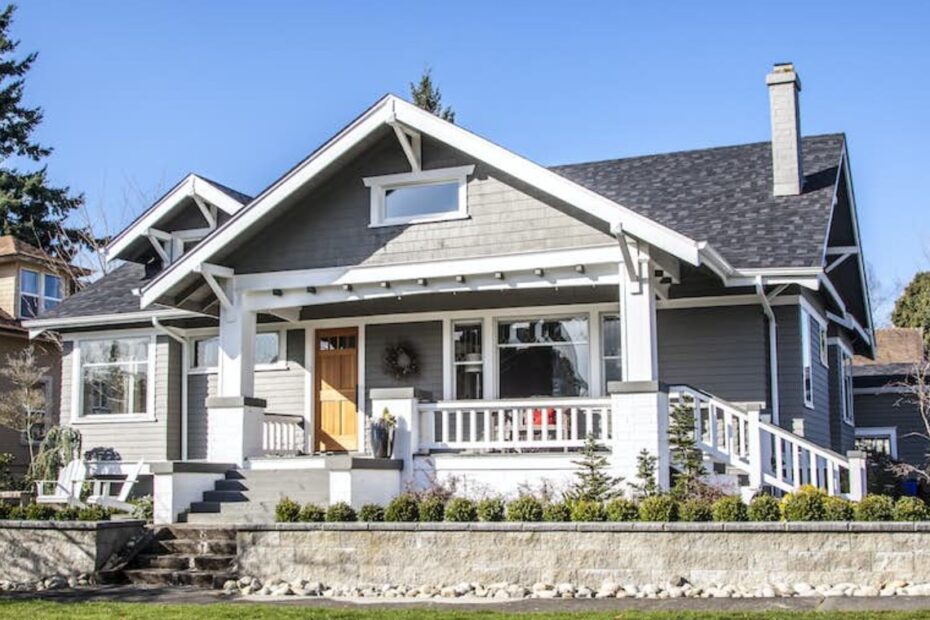When considering the purchase of a house with asbestos siding, potential homeowners often ask, Will A Bank Finance A House With Asbestos Siding? This question is crucial, as asbestos, once a popular building material, is now known for its health risks. Understanding the impact of asbestos siding on financing is essential for making an informed decision.
Key Takeaways
- Banks may finance homes with asbestos siding but with certain conditions.
- The presence of asbestos can affect the appraisal value and insurance costs.
- Loans may require specific asbestos inspections or remediation plans.
Will A Bank Finance A House With Asbestos Siding?
Yes, a bank can finance a house with asbestos siding, but the process may involve additional inspections and considerations regarding the condition of the asbestos and its impact on the home’s value and insurability.
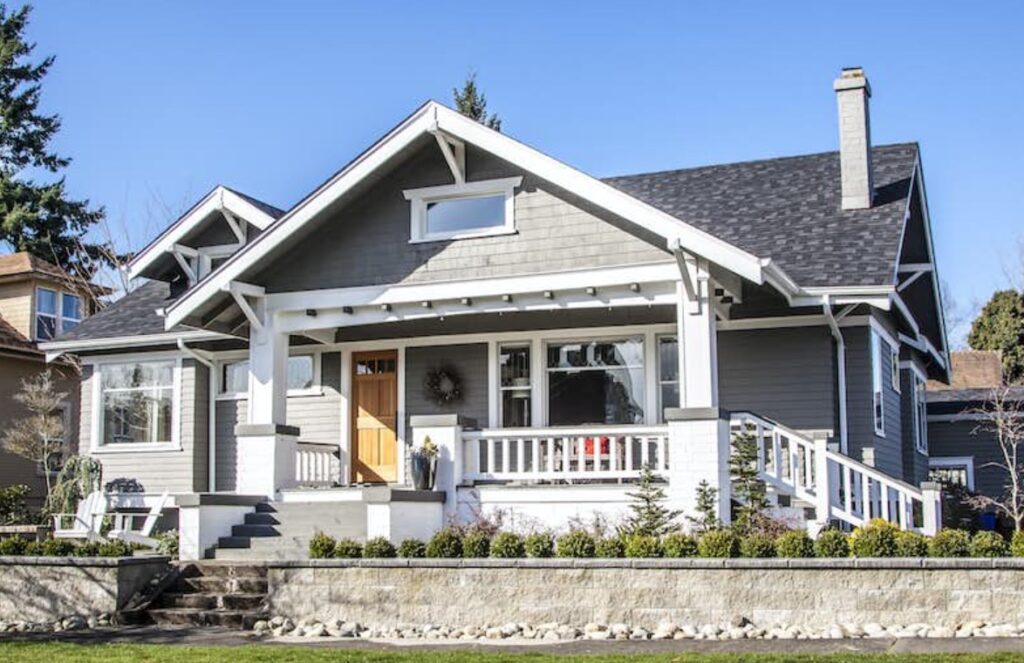
Financial Implications of Asbestos Siding
Banks and Financial Institutions: Will They Provide Loans?
Banks can provide financing for houses with asbestos siding, but it’s not always straightforward. Lenders often require a thorough inspection to assess the risk. If asbestos is found to be friable (easily crumbled), this can complicate the loan approval process.
Risk Assessment and Loan Approval
- Appraisal and Value Impact: Asbestos siding can affect the home’s market value. Appraisers assess the condition of the siding and the potential costs for removal or encapsulation.
- Insurance Considerations: Insurance companies may increase premiums or deny coverage for homes with asbestos, affecting the buyer’s eligibility for a mortgage.
Health and Safety Concerns
Understanding Asbestos Risks
Asbestos siding poses health risks, particularly if the material is disturbed. Banks consider these risks when financing homes with asbestos siding.
Mitigating Health Risks
- Inspection and Testing: Professional inspections are crucial to determine the condition of asbestos siding.
- Remediation and Removal: If asbestos is deemed hazardous, banks may require a plan for removal or encapsulation as a condition of the loan.
Legal and Regulatory Factors
Asbestos Regulations and Compliance
There are legal considerations when dealing with asbestos siding. Local, state, and federal regulations may impact the financing process.
Compliance and Legal Requirements
- Disclosure Laws: Sellers must disclose the presence of asbestos, impacting the negotiation and financing process.
- Regulatory Compliance: Compliance with environmental regulations is necessary for loan approval.
Renovation and Repair Considerations
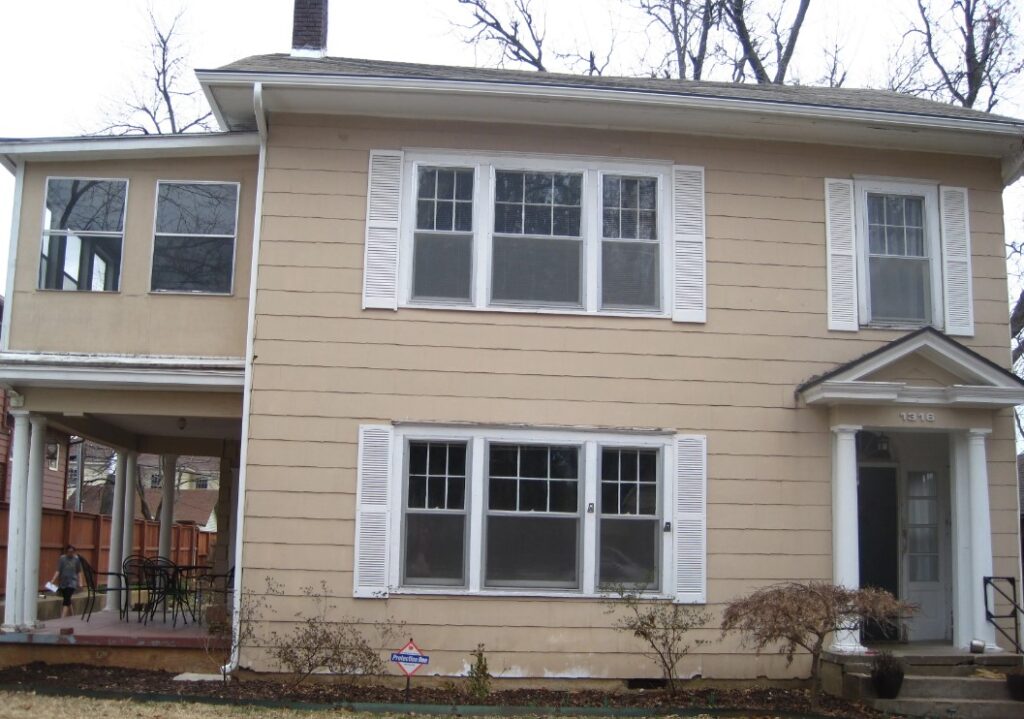
Handling Asbestos Siding During Renovations
Renovating a home with asbestos siding requires careful planning. This can affect financing, as lenders consider the costs and risks of renovation.
Managing Renovation Risks
- Renovation Plans: Detailed plans for handling or removing asbestos siding are often required for loan approval.
- Cost Implications: Renovation costs can be significant, impacting the total loan amount.
Market Trends and Resale Value
Asbestos Siding’s Impact on Resale
The presence of asbestos siding can influence the home’s future resale value, an important consideration for both buyers and lenders.
Understanding Market Dynamics
- Buyer Perceptions: Asbestos can deter some buyers, affecting resale value.
- Future Market Trends: The market’s evolving view of asbestos impacts long-term investment potential.
Insurance and Mortgage Interplay
When dealing with houses with asbestos siding, the relationship between insurance and mortgage becomes pivotal. Banks often require comprehensive insurance coverage as a prerequisite for mortgage approval. However, finding an insurer willing to cover a property with asbestos siding can be challenging.
Insurance Challenges
- Higher Premiums and Limited Options: The presence of asbestos often leads to higher insurance premiums. In some cases, insurers may refuse to cover such properties altogether.
- Negotiating Insurance Terms: Prospective homeowners may need to negotiate terms with insurers, including clauses specifically addressing asbestos-related risks.
Mortgage Approval Dependencies
- Insurance as a Mortgage Condition: Banks usually mandate full insurance coverage before approving a mortgage. In the absence of suitable insurance, securing a mortgage can be difficult.
- Alternative Financing Options: In cases where traditional mortgage and insurance options are limited, exploring alternative financing methods, such as owner financing or special asbestos abatement loans, might be necessary.
Long-term Financial Planning
Owning a house with asbestos siding requires careful long-term financial planning. The potential costs of maintenance, remediation, or eventual removal of asbestos should be factored into the homeowner’s financial strategy.
Budgeting for Future Costs
- Reserve Funds for Asbestos Management: Setting aside a dedicated fund for potential asbestos-related issues is prudent. This fund can cover inspections, maintenance, or eventual removal costs.
- Impact on Home Equity: The costs associated with asbestos can affect home equity. Regular evaluations of the property’s value, considering the presence of asbestos, are recommended.
Financial Risks and Rewards
- Assessing Long-term Risks: Homeowners should assess the long-term financial risks, including the possibility of increased costs due to changing regulations or health risks associated with asbestos.
- Potential for Value Appreciation: If asbestos is properly managed or removed, the property may appreciate in value, particularly in desirable locations or markets.
Asbestos Abatement and Loan Structuring
Addressing asbestos issues in a property often requires a well-structured loan that accommodates the costs of asbestos abatement. This consideration is essential for both the buyer and the lender.
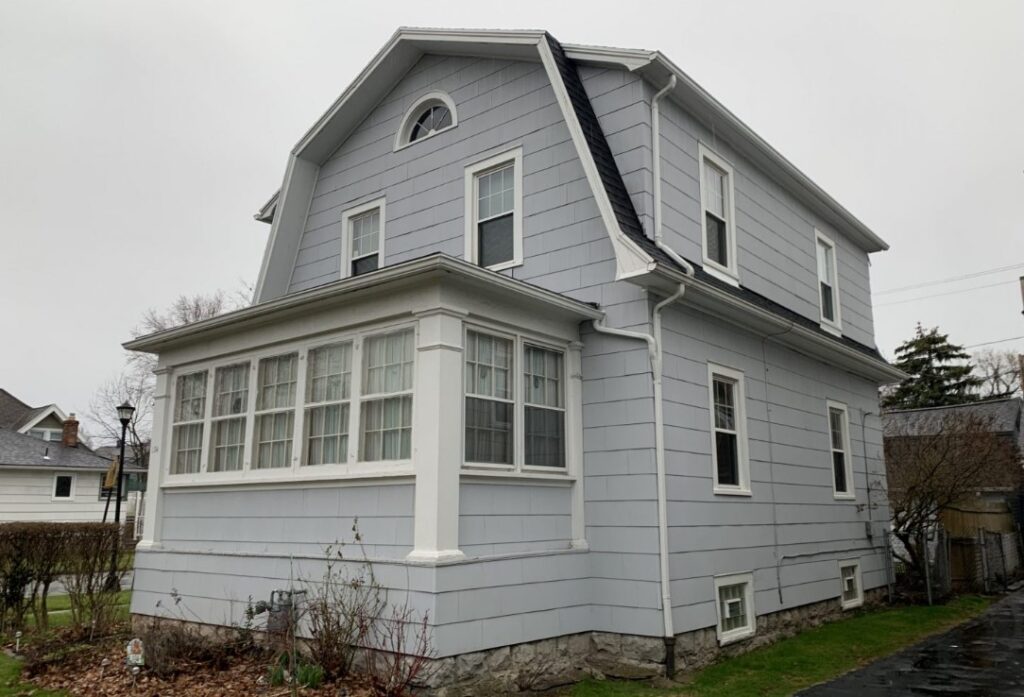
Financing Asbestos Abatement
- Specialized Loan Products: Some lenders offer loan products that include funds for asbestos inspection, removal, or encapsulation. These loans often have specific terms and conditions.
- Government and Assistance Programs: There might be government or local assistance programs available that provide financial aid or low-interest loans for asbestos abatement.
Loan Structuring Considerations
- Incorporating Abatement Costs into Mortgage: Prospective homeowners may consider incorporating the costs of asbestos management into their mortgage. This approach requires careful planning to ensure affordability.
- Impact on Loan Terms: The additional costs associated with asbestos abatement can affect loan terms, including interest rates and repayment schedules.
Environmental Impact and Sustainability
The environmental impact of asbestos is a concern for homeowners and communities. Sustainable practices in managing asbestos siding are not only environmentally responsible but can also have financial benefits.
Environmental Considerations
- Safe Disposal of Asbestos: Ensuring safe and environmentally friendly disposal of asbestos materials is crucial. This may involve specialized waste management services.
- Sustainable Alternatives: When renovating or replacing asbestos siding, considering environmentally sustainable alternatives can enhance the property’s appeal and value.
Community and Regulatory Engagement
- Community Awareness: Educating the community about the presence and management of asbestos can foster a safer environment.
- Staying Informed on Regulations: Homeowners should stay informed about local and federal environmental regulations regarding asbestos to ensure compliance and avoid potential fines.
Personal Health and Safety Measures
Living in a house with asbestos siding necessitates ongoing personal health and safety measures. Awareness and proactive management can significantly reduce health risks associated with asbestos.
Regular Monitoring and Maintenance
- Routine Inspections: Regular inspections by qualified professionals can detect any deterioration in asbestos siding, reducing the risk of asbestos fiber release.
- Maintenance Best Practices: Adhering to recommended maintenance practices, such as avoiding drilling or cutting into asbestos siding, is crucial for safety.
Health Risk Awareness
- Understanding Asbestos Exposure Risks: Homeowners should educate themselves about the health risks associated with asbestos exposure, particularly during renovations or accidental damage.
- Emergency Response Plan: Having a plan in place for accidental disturbances of asbestos materials, including immediate professional assessment and remediation, is essential for safety.
Can You Get A Mortgage On A House With Asbestos Siding?
Yes, it is possible to get a mortgage on a house with asbestos siding, but there are several factors that lenders consider. Banks and financial institutions conduct a thorough risk assessment before approving such a mortgage. They often require a detailed inspection to assess the condition of the asbestos siding.
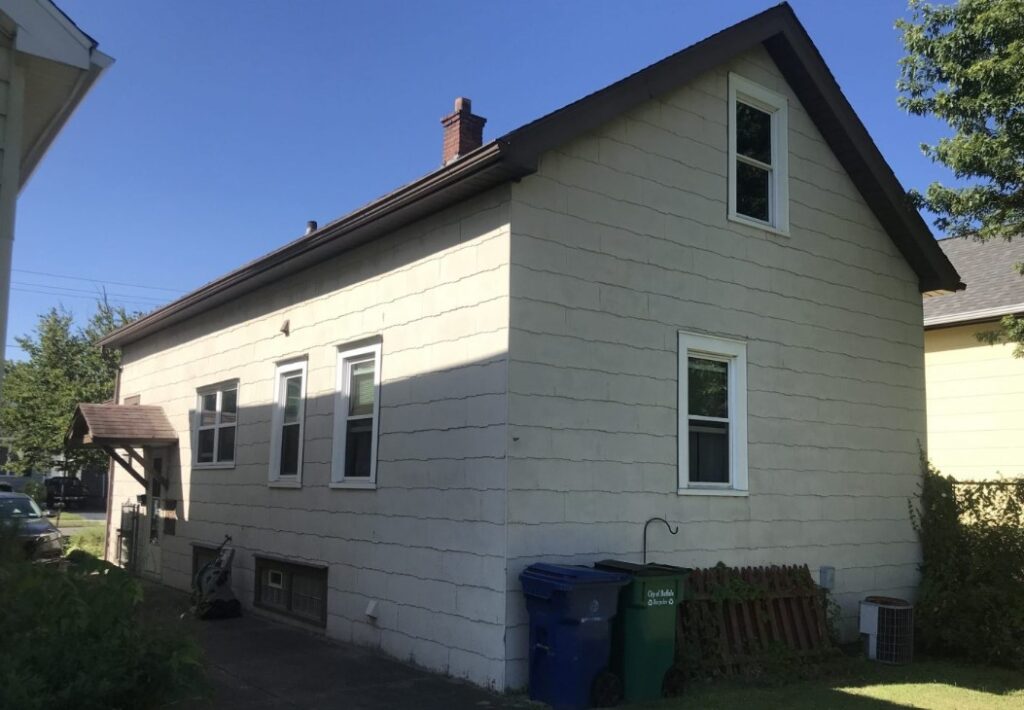
If the asbestos is friable (easily crumbled), it might be a significant concern for the lender. Additionally, the presence of asbestos can impact the appraisal value of the property, which in turn affects the mortgage terms.
Insurance issues also play a crucial role, as lenders require the property to be insured, and homes with asbestos siding often face higher insurance premiums or difficulties in obtaining coverage. In summary, while obtaining a mortgage on a house with asbestos siding is feasible, it comes with additional considerations and potential complications.
Can You Cover Up Asbestos Siding?
Covering up asbestos siding is a viable option and is often considered a safer and more cost-effective alternative to removal. The process, known as encapsulation, involves installing new siding over the existing asbestos siding.
Encapsulation is preferred as it prevents the asbestos fibers from becoming airborne, which is a major health risk. However, it is crucial to have the asbestos siding inspected by a professional before encapsulation to ensure it is not damaged or friable.
It’s also important to comply with local building codes and possibly obtain permits for the work. The key is to avoid disturbing the asbestos material during the encapsulation process. Encapsulation can also improve the aesthetic appeal of the property and potentially its market value.
How Do You Drill Through Asbestos Siding?
Drilling through asbestos siding is generally not recommended due to the high risk of releasing asbestos fibers into the air, which can be hazardous to health. If drilling is absolutely necessary, it should only be done by professionals who specialize in asbestos management.
These professionals use specific techniques and safety equipment to minimize the release of asbestos fibers. The process typically involves using a wet drilling method, where the area is kept damp to prevent dust, and using specialized drill bits.
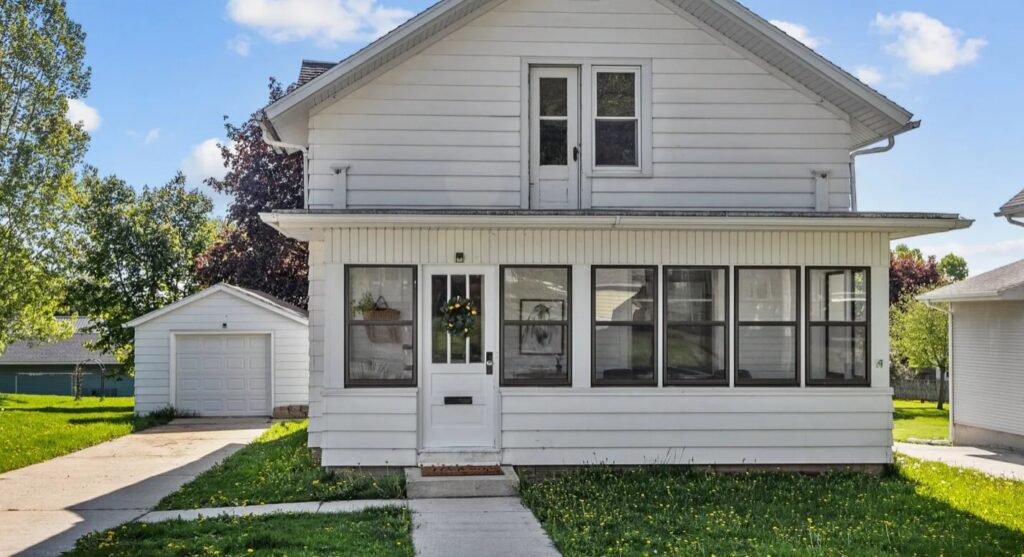
It is essential to wear appropriate personal protective equipment (PPE), such as respirators and protective clothing. The area must be isolated, and dust collection methods should be employed.
After drilling, thorough cleanup and disposal of asbestos-contaminated materials according to environmental regulations are crucial. Due to the complexities and health risks involved, homeowners are strongly advised to seek professional help rather than attempting to drill through asbestos siding themselves.
Can You Power Wash Asbestos Siding?
Power washing asbestos siding is not recommended due to the high risk of asbestos fiber release, which poses serious health hazards. Asbestos siding, especially if old or brittle, can be easily damaged by the high pressure of a power washer, leading to the release of asbestos fibers into the air.
The Environmental Protection Agency (EPA) and other health and safety organizations strongly advise against any activity that disturbs asbestos-containing materials.
Instead of power washing, gentle cleaning by hand with a damp cloth or sponge is advised for asbestos siding. If cleaning or maintenance requires more extensive work, it’s recommended to hire a professional experienced in handling asbestos to prevent contamination and health risks.
Can You Get An FHA Loan With Asbestos Siding?
Obtaining an FHA (Federal Housing Administration) loan for a house with asbestos siding is possible, but there are specific considerations and requirements. FHA loans require that the property meets certain health and safety standards.

If the asbestos siding on a home is in good condition (intact, non-friable, and not posing any immediate health hazard), an FHA loan may be approved. However, if the inspection reveals damaged or deteriorating asbestos siding, remediation measures such as repair, encapsulation, or removal may be required for loan approval.
FHA appraisals will also take into account the presence of asbestos siding when determining the value of the property. Borrowers should be prepared for potential additional inspection and remediation costs when considering an FHA loan for a property with asbestos siding.
Does Asbestos Siding Affect Resale Value?
The presence of asbestos siding can indeed affect the resale value of a home. Homes with asbestos siding often have a lower market value compared to similar homes without asbestos.
This is primarily due to the potential health risks associated with asbestos, as well as the costs and complexities involved in managing or removing it. Potential buyers might be deterred by the presence of asbestos, leading to a smaller pool of interested parties and possibly longer sale times.
However, the impact on resale value can vary depending on the condition of the siding, the local real estate market, and buyer perceptions. In some cases, professional removal or encapsulation of asbestos siding can mitigate its negative impact on resale value. It’s important for sellers to disclose the presence of asbestos, as failure to do so can lead to legal complications.
What If My House Has Asbestos Siding?
If your house has asbestos siding, it’s important to assess the condition of the siding to determine the appropriate course of action. If the asbestos siding is in good condition (non-friable and intact), it generally does not pose a significant health risk. In this case, leaving the siding undisturbed may be the best option.
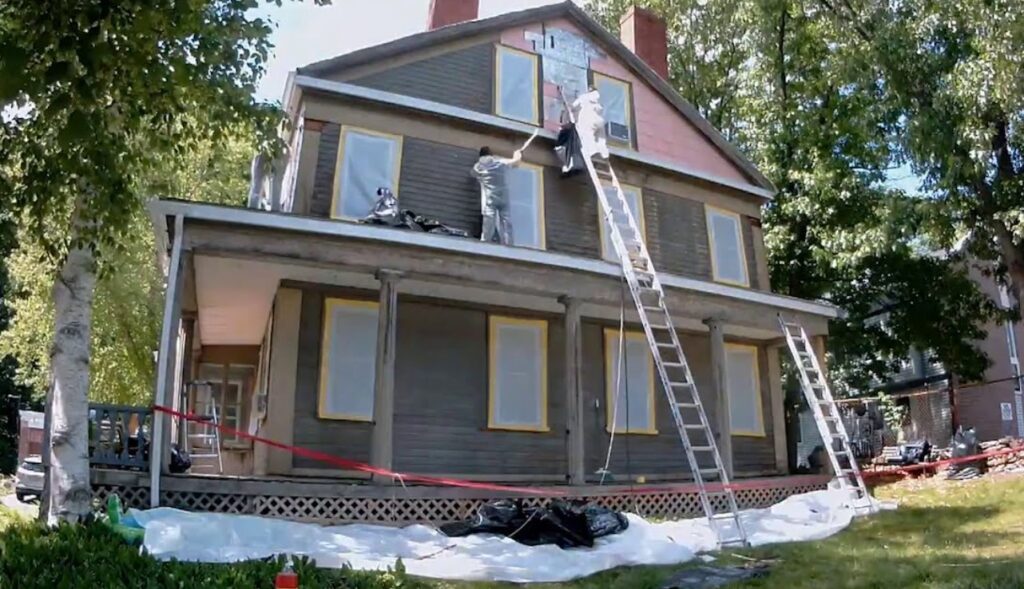
However, if the siding is damaged or deteriorating, it poses a risk of asbestos fiber release, and you should consider professional management strategies like encapsulation or removal. Regular inspections by qualified professionals are recommended to monitor the condition of the asbestos siding.
It’s also important to avoid activities that can disturb the asbestos, such as drilling, cutting, or power washing the siding. When considering selling the house or undertaking renovations, consulting with asbestos removal experts and understanding local regulations and requirements are crucial steps.
Do You Have To Disclose Asbestos When Selling A House?
Yes, disclosure of asbestos is legally required when selling a house in many jurisdictions. Sellers are obligated to inform potential buyers of any known asbestos-containing materials (ACMs) in the property, including asbestos siding.
This requirement is part of the property disclosure statement, a document that provides buyers with information on the condition and features of the property. Failure to disclose the presence of asbestos can lead to legal consequences, including lawsuits for nondisclosure.
Transparency regarding asbestos is not only a legal requirement but also an ethical practice that ensures the safety and informed decision-making of potential buyers.
What Makes A House Uninhabitable For A Mortgage?
A house is deemed uninhabitable for a mortgage if it fails to meet certain health, safety, and structural standards set by the lender. Key factors that can render a property uninhabitable include major structural issues (like significant foundation problems), severe water damage, hazardous materials (like high levels of asbestos or lead), and lack of essential utilities (such as electricity, water, and sewage disposal).

Lenders are reluctant to finance properties that pose a high risk to occupants or require substantial repairs to make them livable. Each lender and loan program may have specific criteria for what constitutes an uninhabitable property. For a property with significant issues, buyers may need to look into specialized renovation loans or other forms of financing.
Do Conventional Loans Require Repairs?
Conventional loans may require repairs if issues are identified during the home appraisal that affect the safety, security, or structural integrity of the property. Lenders using conventional loans typically want to ensure that the property is in good condition and does not pose a risk to the borrower.
Common repair requirements include fixing structural damage, addressing health and safety hazards, and ensuring the property meets local building codes. However, the extent to which repairs are required can vary depending on the lender’s policies and the specific conditions of the loan.
Buyers and sellers can negotiate who is responsible for making the necessary repairs before the sale is completed. In some cases, a repair escrow can be set up to handle necessary post-closing repairs.
Conclusion
When contemplating the purchase of a house with asbestos siding, understanding the nuances of financing is critical. Banks may finance these properties, but the presence of asbestos impacts various factors, including appraisal value, insurance, health risks, legal compliance, renovation costs, and market trends.
Prospective buyers must navigate these complexities, balancing the risks and rewards. Asbestos siding, while manageable, requires careful consideration in the context of home financing.
Frequently Asked Questions
Can I include the cost of asbestos remediation in my mortgage?
Yes, some loan structures allow you to include the cost of asbestos remediation in the mortgage. This can be negotiated with the lender and should be carefully planned to ensure affordability.
Is asbestos siding removal always necessary before selling a house?
Removal isn’t always necessary but can increase the home’s marketability and value. Disclosure of asbestos presence is legally required, and some buyers might request removal or lower the offer price to accommodate the removal costs.
What are the health risks associated with asbestos siding, and how can I mitigate them?
Asbestos poses health risks, especially when disturbed. Regular professional inspections and maintenance can mitigate these risks. In case of deterioration, professional removal or encapsulation is advised.
Are there special loan programs for homes with asbestos siding?
Some lenders offer specialized loan products that include funds for asbestos remediation. Additionally, certain government programs may provide financial aid or low-interest loans for asbestos abatement.

Muhammad Talha Naeem is a seasoned finance professional with a wealth of practical experience in various niches of the financial world. With a career spanning over a decade, Talha has consistently demonstrated his expertise in navigating the complexities of finance, making him a trusted and reliable figure in the industry.
